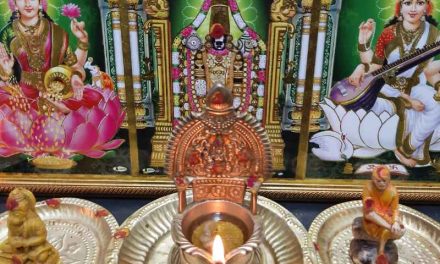Meditation is a practice that involves training the mind to achieve a state of awareness, calmness, and insight. Meditation can have various benefits for physical, mental, and spiritual well-being, such as reducing stress, enhancing concentration, and cultivating compassion. Meditation can also be a way to attain enlightenment, self-realization, and liberation from suffering, according to many spiritual traditions.
One of the ancient sources of meditation teachings is the Jabaladarsana Upanishad, also known as the Darsana Upanishad or the Jabala Upanishad. This is a minor Upanishad of Hinduism, which is one of the 20 Sannyasa Upanishads that deal with the topic of renunciation and asceticism. The Jabaladarsana Upanishad is attached to the Shukla Yajurveda, one of the four Vedas that contain the sacred scriptures of Hinduism.
The Jabaladarsana Upanishad is a dialogue between Lord Dattatreya, an incarnation of Vishnu who is considered the guru of all gurus, and his disciple Sankriti, a sage and a yogi. In this Upanishad, Dattatreya teaches Sankriti about the eightfold path of yoga, which consists of yama (ethical rules), niyama (personal observances), asana (postures), pranayama (breath control), pratyahara (withdrawal of the senses), dharana (concentration), dhyana (meditation), and samadhi (absorption).
The Upanishad explains that the goal of yoga is to realize the identity of one’s self (atman) with the supreme self (brahman), which is the ultimate reality and the source of all existence. The Upanishad also describes various methods and techniques of meditation, such as focusing on the breath, the sound of Om, the chakras (energy centers), the elements (earth, water, fire, air, and ether), and the inner light. The Upanishad also gives instructions on how to prepare for meditation, such as choosing a suitable place, time, posture, and attitude.
The Jabaladarsana Upanishad emphasizes that meditation is not just a mental exercise but a way of life that requires detachment from worldly desires, devotion to God, and compassion for all beings. The Upanishad also warns against the obstacles and distractions that may arise during meditation, such as sleepiness, restlessness, doubt, attachment, egoism, and ignorance. The Upanishad advises that one should overcome these hindrances through constant practice, perseverance, faith, discrimination, and surrender.
The Jabaladarsana Upanishad is a valuable source of wisdom and guidance for anyone who wishes to practice meditation and attain self-realization. The Upanishad reveals the secrets of yoga and its benefits for spiritual growth and liberation. The Upanishad also inspires us to live a life of renunciation, purity, service, and love. By following the teachings of this Upanishad, we can experience the peace and bliss that come from realizing our true nature and our connection with the divine.
The ancient wisdom of the Jabaladarsana Upanishads takes seekers on a profound journey into the depths of the self, guiding them toward the realization of the ultimate truth, the Atman. In this exploration, we delve into the teachings of these Upanishads, unraveling the concepts of the inner self and the Atman, and understanding their significance in the pursuit of self-realization.
- Unveiling the Atman: A Core Tenet of Jabaladarsana Upanishads
- Understanding the Upanishadic concept of Atman as the eternal, unchanging self.
- Exploring how the Atman is distinct from the physical body and the mind.
- The Inner Self: Mirror to the Divine
- Delving into the idea of the inner self as a reflection of the divine reality (Brahman).
- Discussing the Upanishadic views on the nature of this inner self and its connection to the greater cosmos.
- Paths to Self-Realization: Contemplation, Meditation, and Knowledge
- Analyzing the different approaches advocated by the Jabaladarsana Upanishads for attaining self-realization, including introspection, meditation, and the pursuit of knowledge.
- Examining the practices and techniques suggested to help individuals connect with their inner selves.
- From Illusion to Enlightenment: Liberation through Atman Realization
- Exploring how the recognition of the true self (Atman) leads to the dispelling of illusion (Maya) and the attainment of liberation (Moksha).
- Discussing the transformative power of self-realization in breaking free from the cycle of birth and death.
- The Guru’s Role: Guiding Light on the Path of Self-Discovery
- Highlighting the significance of the guru-disciple relationship in understanding and realizing the inner self and Atman.
- Sharing anecdotes and insights from the Upanishadic teachings that emphasize the importance of a qualified teacher on the spiritual journey.
- Modern Relevance: Applying Upanishadic Wisdom to Contemporary Life
- Drawing parallels between the Upanishadic teachings on the inner self and the challenges of modern existence.
- Offering practical insights and techniques inspired by the Jabaladarsana Upanishads to help individuals find inner peace and purpose.
- The Atman’s Unity: Beyond Boundaries of Time and Space
- Exploring the Upanishadic perspective on the universality of the Atman, transcending individual identities and divisions.
- Reflecting on how this concept can inspire a sense of interconnectedness and compassion in today’s globalized world.
Conclusion
The Jabaladarsana Upanishads invite us to embark on a profound inner journey, guiding us toward the discovery of the true self – the Atman. Through contemplation, meditation, and the guidance of a guru, these ancient teachings offer timeless wisdom that remains relevant in our quest for self-realization and a deeper understanding of the interconnected nature of existence.





